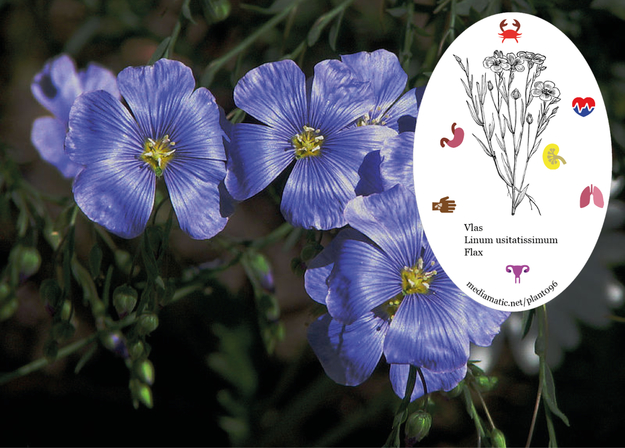Linseed has a long history of medicinal use, its main effects being as a laxative and expectorant that soothes irritated tissues, controls coughing and relieves pain. The seed, or the oil from the seed are normally used. The seed is analgesic, demulcent, emollient, laxative, pectoral and resolvent. The crushed seed makes a very useful poultice in the treatment of ulceration, abscesses and deep-seated inflammations. An infusion of the seed contains a good deal of mucilage and is a valuable domestic remedy for coughs, colds and inflammation of the urinary organs. If the seed is bruised and then eaten straight away, it will swell considerably in the digestive tract and stimulate peristalsis and so is used in the treatment of chronic constipation. The oil in the seed contains 4% L-glutamic acid, which is used to treat mental deficiencies in adults. It also has soothing and lubricating properties, and is used in medicines to soothe tonsillitis, sore throats, coughs, colds, constipation, gravel and stones. When mixed with an equal quantity of lime water it is used to treat burns and scalds. The bark and the leaves are used in the treatment of gonorrhoea. The flowers are cardiotonic and nervine. The plant has a long history of folk use in the treatment of cancer. It has been found to contain various anticancer agents. The German Commission E Monographs, a therapeutic guide to herbal medicine, approve Linum usitatissimum for constipation, inflammation of the skin. Source: https://pfaf.org/
Flax
Linum usitatissimum
Find more about this this plant on Wikipedia.

With: